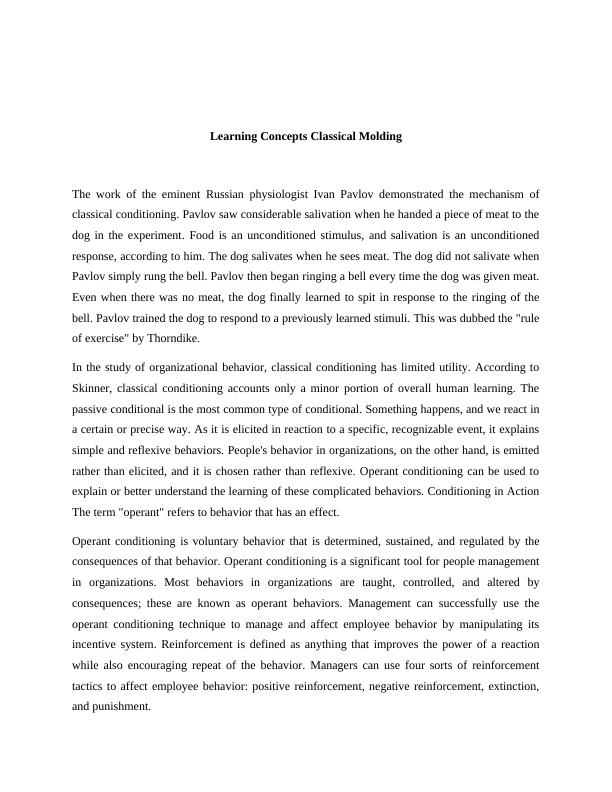Learning Concepts Classical Molding
3 Pages1171 Words32 Views
Added on 2023-02-07
About This Document
This article discusses the concepts of classical conditioning and operant conditioning in the context of organizational behavior. It explains how classical conditioning has limited utility in understanding human learning and behavior in organizations, while operant conditioning is a valuable tool for managing and influencing employee behavior. The article also explores the importance of attitude and perception in organizational behavior, highlighting how they impact interactions and communication within an organization.
Learning Concepts Classical Molding
Added on 2023-02-07
ShareRelated Documents
End of preview
Want to access all the pages? Upload your documents or become a member.
Unconditional and Natural Response
|7
|1775
|186
Operant and Classical Conditioning Theories in Psychology
|4
|726
|410
Operant and Classical Conditioning Theories in Psychology
|4
|732
|267
Introduction to Psychology Theory 2022
|10
|2712
|26
Behavioral Perspective Assignment
|5
|657
|139
Associative Learning in Psychology
|5
|1008
|84

